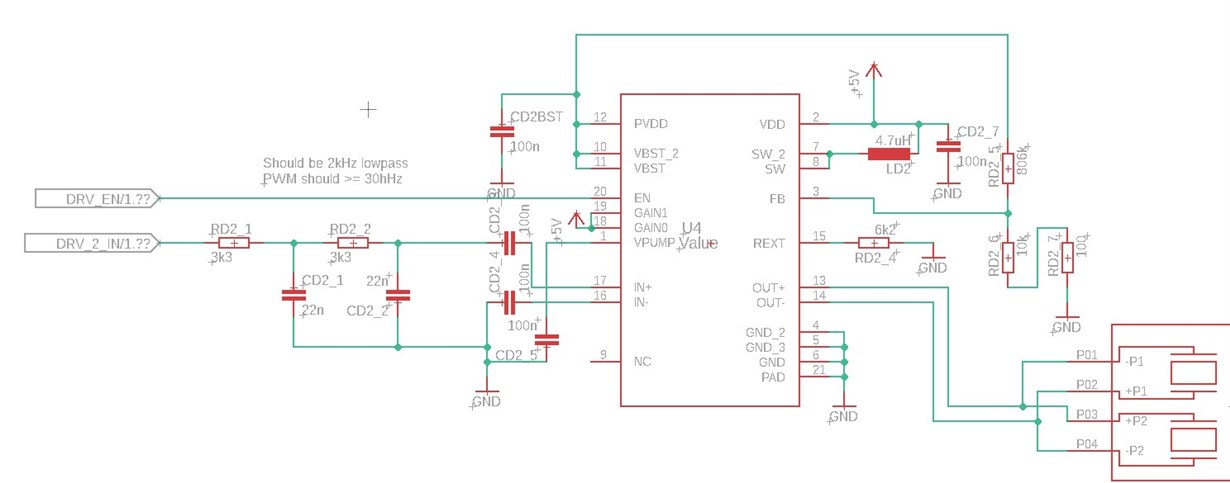Hello.
I am using the DRV27001 in a design to drive a Piezo using a uC PWM output (via anti alias) to apply a sinus wave.
I am sure the design works. However, recently all hand soldered (hot air) implementations of the circuit do not work. The solder joint seems fine. The booster seems to work (110V can be measured on the boost capacitor) but no signals are amplified. Also, the boost capacitor is buzzing, though I wouldn't mind that.
I tried keeping the soldering temperature as low as possible. But is it a heat issue?
Am I simply bad at SMD soldering?
Is it a known thing?
The layout is correct but not optimized - could there be an issue there?
Here the circuit in question:
I managed to get it to work 3 out of 15 times (with different DRV2700 chips). All 4 DRV2700EVM boards I have work excellent.
Hope you can help,
best regards,
David


